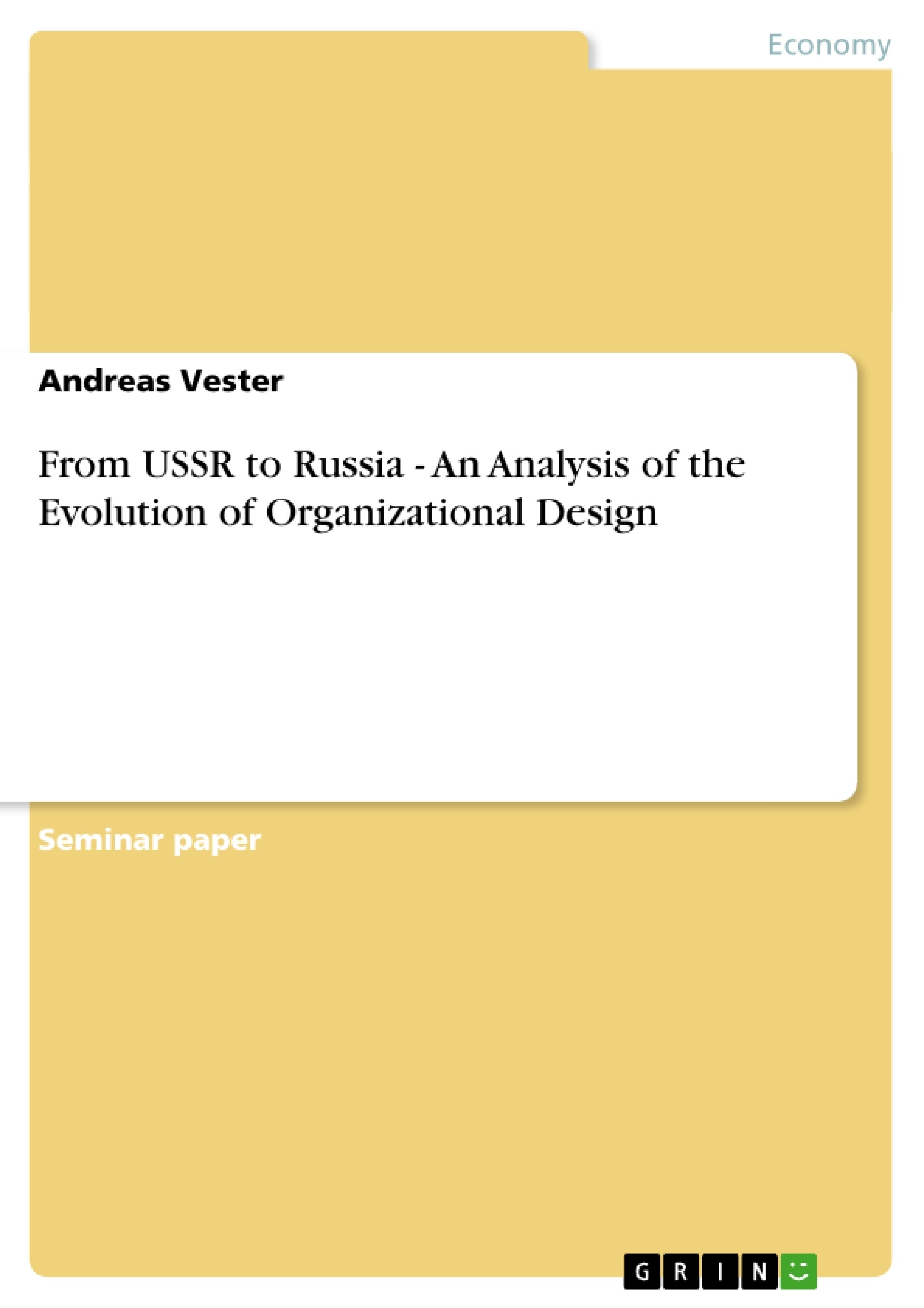The main purpose of this paper was to examine consequences changes in organizational design in post communist Russia and the ‘Big Picture’ of how these consequences changes will affect Russia.. We posed the question if it is possible for Russia to gain back some of its former power by centralization within the whole government structure.
Inhaltsverzeichnis (Table of Contents)
- Introduction
- Structure of the USSR's Government between 1917 and 1991
- Russia's Government Structure after 1991
- The Crash Down of the USSR under Aspects of Organizational Analysis
- The Soviet's Dependencies on the External Environment
- The Reagan Administration’s Influence on the External Environment of the USSR
Zielsetzung und Themenschwerpunkte (Objectives and Key Themes)
This paper examines the consequences of changes in organizational design in post-communist Russia and how these changes will impact the country's future. It aims to determine if Russia can regain its former power by centralizing its government structure.
- The evolution of Russia’s governmental structure from the USSR to the present
- The impact of centralized organizational design on Russian power and influence
- The role of the external environment, particularly the United States, in shaping Russia’s development
- The influence of economic factors on Russian political and social life
- The implications of Russian government policies for the global economy and political landscape
Zusammenfassung der Kapitel (Chapter Summaries)
- Introduction: This section provides a brief overview of the paper's objectives and structure. It poses the central question of whether Russia can regain its former power through government centralization.
- Structure of the USSR's Government between 1917 and 1991: This chapter examines the historical development of the Soviet government from the Bolshevik Revolution to the disintegration of the USSR. It highlights key figures like Lenin and Stalin, as well as the impact of the five-year plans and the changing political landscape.
- Russia's Government Structure after 1991: This section delves into the formation of the post-communist Russian government, focusing on the rise of Boris Yeltsin and the establishment of a new constitution that granted the president greater power.
- The Crash Down of the USSR under Aspects of Organizational Analysis: This chapter analyzes the organizational structure of the former USSR as a functional structure characterized by centralization. It discusses the limitations of this structure and the Soviet Union's dependence on the external environment, especially in terms of technology and banking.
- The Soviet's Dependencies on the External Environment: This section explores the specific ways in which the Soviet Union relied on external resources, including oil sales, joint projects, and technology imports. It illustrates the USSR's vulnerability to external influences.
- The Reagan Administration’s Influence on the External Environment of the USSR: This chapter examines how the Reagan Administration actively sought to weaken the Soviet Union by exploiting its vulnerabilities and strategically manipulating the external environment.
Schlüsselwörter (Keywords)
This paper focuses on key concepts related to organizational design, political and economic development, and international relations. These include: organizational structures, centralization, post-communist transition, Soviet government, Russian government, external environment, United States, Cold War, oil and gas industry, economic dependence, and international influence.
- Arbeit zitieren
- Andreas Vester (Autor:in), 2005, From USSR to Russia - An Analysis of the Evolution of Organizational Design, München, GRIN Verlag, https://www.grin.com/document/49395



